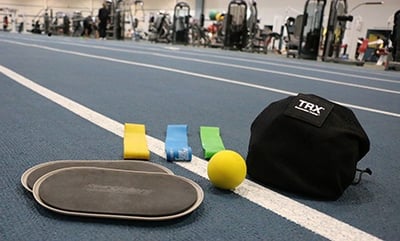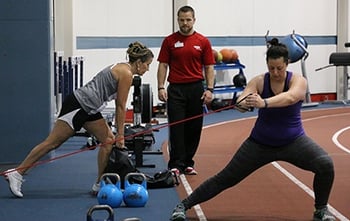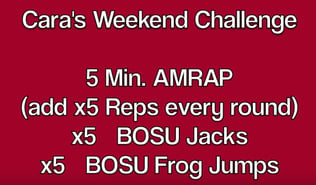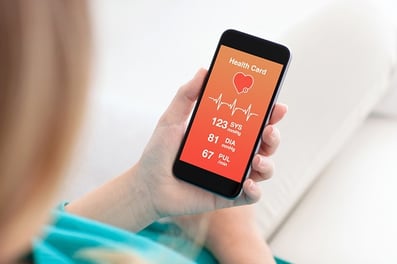 Sometimes you need a little help when it comes to your nutrition and diet choices. Even though we think we know what to do when it comes to our diet, it can be helpful to have some extra assistance with tips, tracking, and suggestions. There are thousands of apps out there that you can easily download to your phone.
Sometimes you need a little help when it comes to your nutrition and diet choices. Even though we think we know what to do when it comes to our diet, it can be helpful to have some extra assistance with tips, tracking, and suggestions. There are thousands of apps out there that you can easily download to your phone.
I have searched through many nutrition apps and found the top five that you should definitely use to help with accountability to your wellness and weight-loss goals.
eaTipster
eaTipster was created by the Dietitians of Canada, and it delivers daily healthy eating tips to your mobile devices. The app addresses common food and nutrition questions and concerns, and provides tips to increase healthy eating, support a healthy weight, and fight chronic disease. You can add tips to your favorites to read them later. Then you can share the tips with friends via Facebook, Twitter, email, and text. One nice perk of this app is you can set daily reminders to receive the tip at a time that fits your routine.
MyFitnessPal
MyFitnessPal is a community-oriented site designed to help you lose weight and track fitness goals. The mobile apps let you keep these features at your fingertips wherever you are. You can input or edit your goals, enter your caloric intake (food) and output (exercise) on the go, and add new food data to the library if it doesn't already exist. There's also a progress screen that lets you track your weight and view a graphic representation of how you're doing as you work toward your goals.
The food database includes over 5,000,000 options and is one of the few free food tracking apps that is this easy and user friendly. Due to its popularity, you can sync MyFitnessPal with other devices and apps such as FitBit, Jawbone Up, and Garmin. The recipe importer allows you to go to any recipe on the web and easily import it and track it. One of my favorite components of this app is that it tells you more than just total calories. You can easily track your sugar grams, calcium, iron, and other vitamins and minerals to guarantee you are getting your needs met.
Fooducate
Fooducate helps you shop and eat healthily by allowing you to quickly pull up nutritional information about food products from barcodes, as well as by helping you make sense of nutritional labels. Fooducate displays a letter grade from A to D, along with a quick summary of nutrition information in plain language, as well as healthy alternative suggestions. If you cook your own meals or eat out, you can also manually enter a meal's nutritional information. In addition, the app also doubles as an intake, calorie, and exercise tracker. This app easily allows you to see what extras are in foods such as added sugars, food colorings, artificial sweeteners, and more, which can be challenging to know without reading every single ingredient.
HealthyOut
The HealthyOut Healthy Meal Finder app helps you stay on track even when you're going out or ordering delivery. The app helps users find healthy restaurant dishes and prepared grocery items nearby, and supports a wide variety of diet plans. The app comes with a wealth of diet and food filters, allowing you to filter by cuisine, ingredients, or type of dish. You can also view detailed nutritional information on each meal where available. It's a great option when you don't have the time to prepare a healthy meal of your own. The popular “Not a Salad” feature allows you to find a dish that can be just as healthy as the typical salad. HealthyOut is great if you travel a lot or just want to know the best options at your favorite neighborhood restaurant choice.
My Nutrition Coach
My Nutrition Coach is a new app launched by NIFS that allows users to record their food throughout the day and automatically build a daily profile of their diet. The app platform uses photo journaling and meal and exercise input to make tracking quick and easy. At midnight, the profile is passed to my dashboard, where I provide evaluation and feedback on that 24-hour timeline. The information is private, secure, and convenient. Members will receive an email when their daily response is ready for viewing. Users are encouraged to login to the website or app to view responses and graphs that detail their personal ratings and progress.
Your NIFS dietitian will supply you daily feedback, suggestions, and information in the form of handouts and videos based on your daily profile. All you need to do is snap a photo of your meals.
Any one of these apps are sure to help you stay on track with you fitness and nutrition goals. Download one today and get started!
***
What did you eat today? Don’t underestimate the role that proper nutrition plays in your health and fitness. Contact Angie Scheetz ascheetz@nifs.org or call 317-274-3432 to find out more about the My Nutrition Coach app.

This blog was written by Angie Scheetz, RD, Wellness Coordinator at NIFS. To find out more about the NIFS bloggers click here.
 My fitness bucket list was created using SMART goals. SMART goals were first developed in the early 1980s by George Doran in Management Review magazine as a way to be more effective in goal-setting strategy situations. The acronym SMART stands for Specific, Measurable, Attainable, Realistic, and Time Bound. To tie this in with your bucket list, think about goals that may be a little adventurous or challenging, but not too easy. I would avoid having goals such as “go to the gym” and “stop eating cake” and include goals such as “climb Machu Picchu by the time I’m 40 years old” and “complete a marathon in less than two hours.”
My fitness bucket list was created using SMART goals. SMART goals were first developed in the early 1980s by George Doran in Management Review magazine as a way to be more effective in goal-setting strategy situations. The acronym SMART stands for Specific, Measurable, Attainable, Realistic, and Time Bound. To tie this in with your bucket list, think about goals that may be a little adventurous or challenging, but not too easy. I would avoid having goals such as “go to the gym” and “stop eating cake” and include goals such as “climb Machu Picchu by the time I’m 40 years old” and “complete a marathon in less than two hours.”

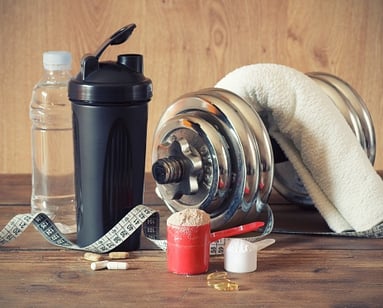 With so many different supplements flooding the shelves these days, it’s hard to know which ones will truly help you achieve your desired results. Although I agree that some supplements might not be necessary to include in your program, others could be beneficial to many individuals no matter what their fitness goals are.
With so many different supplements flooding the shelves these days, it’s hard to know which ones will truly help you achieve your desired results. Although I agree that some supplements might not be necessary to include in your program, others could be beneficial to many individuals no matter what their fitness goals are. 
 Okay, so you may have been hearing the word “PiYo®” circulating these last few months within the world of group fitness. For those of you who feel like you do not completely know what it means or what the class entails, fear not. I guarantee you are not the only one with questions, and as a certified PiYo instructor, I would love to share a few reasons why I teach it, and the benefits that can come from practicing it.
Okay, so you may have been hearing the word “PiYo®” circulating these last few months within the world of group fitness. For those of you who feel like you do not completely know what it means or what the class entails, fear not. I guarantee you are not the only one with questions, and as a certified PiYo instructor, I would love to share a few reasons why I teach it, and the benefits that can come from practicing it. Surprisingly, for many of us (myself included), just using our own bodyweight for certain exercises can be challenging enough. From moves like triceps pushups, to lunges, to side planks, 140+ pounds begins to feel really heavy really quick! PiYo® takes many of these simple-to-learn yet challenging moves and combines them with aspects such as “time under tension” and dynamic pulses to keep the body moving the whole time.
Surprisingly, for many of us (myself included), just using our own bodyweight for certain exercises can be challenging enough. From moves like triceps pushups, to lunges, to side planks, 140+ pounds begins to feel really heavy really quick! PiYo® takes many of these simple-to-learn yet challenging moves and combines them with aspects such as “time under tension” and dynamic pulses to keep the body moving the whole time. 
 It can be hard trying to change your lifestyle or fitness on your own. It can be even harder if you don’t have support from your family and friends. You family and friends can play a key role in your fitness journey, so why not get them involved and gain their support? Including them in your journey can help your motivation and help you enjoy the path to your fitness and health goals.
It can be hard trying to change your lifestyle or fitness on your own. It can be even harder if you don’t have support from your family and friends. You family and friends can play a key role in your fitness journey, so why not get them involved and gain their support? Including them in your journey can help your motivation and help you enjoy the path to your fitness and health goals. 
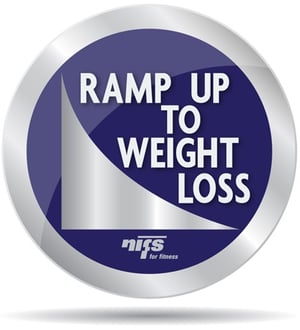
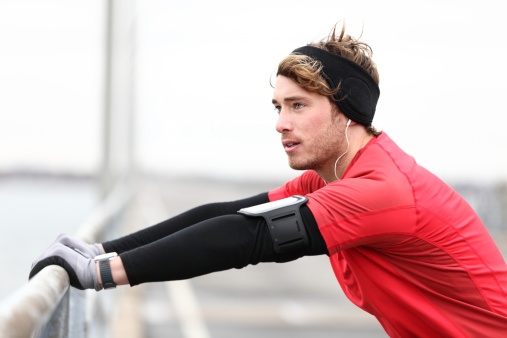 Okay, I know it’s not something we really want to talk, about but let’s face it: the
Okay, I know it’s not something we really want to talk, about but let’s face it: the  The 500 Festival Mini Marathon and Geist Marathon are just around the corner! Now is the time to plan your training program.
The 500 Festival Mini Marathon and Geist Marathon are just around the corner! Now is the time to plan your training program.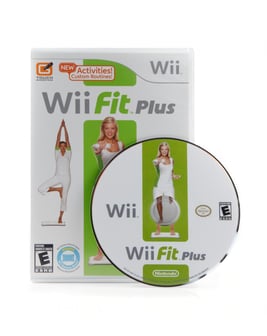 Several years ago the Nintendo Company introduced its newest entry into the video game market with the
Several years ago the Nintendo Company introduced its newest entry into the video game market with the  Sometimes you need a little help when it comes to your nutrition and diet choices. Even though we think we know what to do when it comes to our diet, it can be helpful to have some extra assistance with tips, tracking, and suggestions. There are thousands of apps out there that you can easily download to your phone.
Sometimes you need a little help when it comes to your nutrition and diet choices. Even though we think we know what to do when it comes to our diet, it can be helpful to have some extra assistance with tips, tracking, and suggestions. There are thousands of apps out there that you can easily download to your phone. 
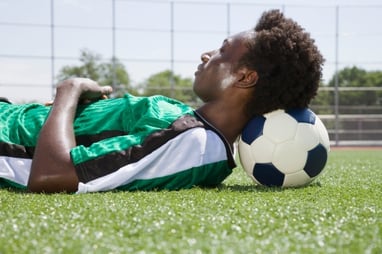 The question I have is, “Do athletes and individuals with higher fitness aspirations need more, less, or the same amount of sleep as everyone else?” Although not many studies have been conducted on the topic, the Gatorade Sports Science Institute published an article entitled
The question I have is, “Do athletes and individuals with higher fitness aspirations need more, less, or the same amount of sleep as everyone else?” Although not many studies have been conducted on the topic, the Gatorade Sports Science Institute published an article entitled 